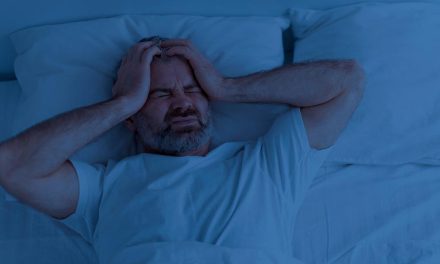Stress is a funny word. Loaded with the emotional bias of being a “bad” thing, the word stress can be quite deceiving, making it harder to handle than it needs to be. So we will offer a new way to look at it—and very effective ways to address it.
As the healing arts grows, it is important to remember that there are four key domains in healing:
- Biochemistry. This includes herbals, nutrition and medications.
- Structural. Including areas such as manipulation, surgery, breathing, exercise, and ergonomics.
- Biophysics. For example, Acupuncture, Chakra work, Yoga, and NAET.
- Mind-Body-Spirit. Understanding how the body is a metaphor for what is occurring at a deeper level. For most illnesses, including anxiety and even cancer, complete healing is unlikely to occur unless this is also attended to.
You will find that healing occurs best when all four of these areas are addressed. No individual healer is likely to have complete expertise in all of these areas. As our new healthcare system evolves, and the current one heads to extinction, it is good to see health practitioners from diverse backgrounds communicating and working together more.
So let’s look at how a Comprehensive Medicine approach works when addressing anxiety and stress. I will focus predominantly on mind-body and biochemical aspects, as these are where my expertise is.
Treating Mind-Body Issues
Stress is not inherently good or bad. In fact, stress can be used to force flowers to bloom, and this analogy applies to people as well. The problem is when stress becomes chronic, and is no longer enjoyable. This then contributes to chronic elevation of the stress hormone cortisol, directly triggering anxiety. As the excessive stress becomes chronic, cortisol levels then go too low—ironically also triggering anxiety by causing recurrent bouts of low blood sugar.
A simple way to tell if stress is healthy? Simply check in to see how it feels. If it feels good, it is healthy. What is enjoyable can vary markedly from person to person. For example I enjoyed the stress of skydiving, while for my wife it would feel awful.
A Novel Treatment
The key stress antidote? Check in to see how things feel. This is so important, that I am being purposely redundant. Learn to say NO to things that feel bad. Leave your brain out of it. Our brain is the product of our societal and family training. It simply feeds back to us what we were taught that we should do to make others happy. Our feelings, on the other hand, tap into our own personal authenticity. So choose to focus on, and do, those things that feel good. Once you’ve determined what feels good, then your mind can figure out how to make it happen.
And yes, it is OK to simply choose to focus on what feels good in life, without being in constant battle mode against things you don’t like. Like food choices at a buffet, we don’t have to protest for the removal of those foods we don’t choose to eat. Simply ignore them and pick those things you like. You will find that the rest will soon stop appearing in your life. This is part of how I suspect “free will” works. Our focus is like the remote control on our TV. What we focus on keeps showing up on our screen. This is why our constant “Wars on…” just seem to create more of what we are attacking.
Is it truly OK to do what feels good? Some will make the argument that “Heroin feels good, and perhaps also smacking that person who makes me angry over the head with a two-by-four.” This is why we add two caveats:
- Don’t hurt others.
- Ask yourself “How is that working out for me?”
Doing this, people will find their anxiety is often coming from their choosing what they think they should do over what feels good (i.e. doing what others want, instead of what is authentic to them). Notice if you are constantly feeling, “I should do this, or I should do that.” This is euphemistically called “Shoulding on yourself.” I invite you to change that toxic behavior.
If hyperventilation is present, one will usually have buried feelings that are bubbling to the surface during periods of relative calm. Counseling to help them learn to feel their feelings helps over time. Also, as panic attacks often leave people feeling like they are going to die, understanding that the symptoms are not dangerous helps. Simply being told this may not be enough to reassure you though. You can confirm hyperventilation is the cause by breathing rapidly for up to 30–60 seconds and seeing how it amplifies your symptoms. Unfortunately, this can also precipitate a full-blown panic attack, so be forewarned, and pick a safe time and place to do this test!
My e-book, “Three Steps to Happiness—Healing through Joy,” can help guide you through the mind-body healing process.
Balance The Biochemistry
Begin with ruling out and treating overt issues, including:
- Overactive thyroid. Consider this if your Free T4 thyroid test is even in the upper 20th percentile of the normal range.
- Low progesterone (women). Progesterone is like our body’s natural Valium. Consider this if anxiety is worse around menses and ovulation.
- Low testosterone (men). Consider if testosterone levels are in the lower quarter of the normal range.
- Adrenal fatigue—caused by drops in blood sugar. A key tip-off? Irritability and anxiety that triggers sugar cravings and improves after eating.
Also optimize nutrient status, especially magnesium and B vitamins. Instead of blood testing, which is of questionable value here, I simply recommend (for most people—whether or not they have anxiety) a high potency multi powder called the Energy Revitalization System (by Enzymatic Therapy). With this, one drink replaces well over 35 pills, optimizing levels of most nutrients. Also have the person decrease sugar and caffeine intake to see if this helps.
Herbals can also be very helpful. For example, there is a unique extract, which can be as effective as Xanax, but is very safe. This special extract stimulates one of the most abundant neuroreceptors in the body, the cannabinoid receptors. Many of you may recognize this as the marijuana receptor, and in fact many people use cannabis to self-medicate for their anxiety. But what if you could get the benefits without the sedation and side effects?
The good news is that now you can. Recent research showed that a special extract of the roots of the narrow leafed coneflower (Echinacea angustifoliae) was more effective than the tranquilizer Librium, with none of the side effects. It also worked quickly, with effects building with continued use. This is not the same component used for immune enhancement, and isn’t found at needed levels in standard Echinacea. It is available though as AnxioCalm (by EuroPharma—20 mg per tablet).
Let’s look at a few studies of this unique extract.
A study published in the March 2012 issue of Phytotherapy Research included 33 volunteers. All experienced anxiety, assessed using the validated State-Trait Anxiety Inventory (STAI). The extract decreased STAI scores within three days, an effect that remained stable for the duration of the treatment (seven days) and for the two weeks that followed treatment. There were no dropouts and no side effects.
Another study looked at higher dosages (40 mg 2 x day) in a multi-center, placebo-controlled, double-blind Phase II study involving 26 volunteers diagnosed with generalized anxiety disorder (GAD). Over a three week period, the number of severely anxious patients (HADS-A scores larger than 11) decreased from 11 to zero!
So I begin with two tablets of AnxioCalm 2x day for severe anxiety. After three weeks, the dose can often be dropped to one 20 mg tablet twice a day. It can also simply be used as needed, and serves as an excellent sleep aid.
Other helpful herbals include valerian, passion flower, hops, theanine, and lemon balm. These can be found in a combination called the “Revitalizing Sleep Formula,” which helps anxiety during the day and sleep at night. I personally use both AnxioCalm and the Revitalizing Sleep Formula at night to ensure 8–9 hours of deep sleep.
The smell of lavender oil is also calming, and a small drop on the upper lip, or even having a lavender bouquet in one’s room, can be helpful.
Structural And Biophysics
Simply going for regular walks in the sunshine, and doing yoga, tai chi, and meditation can be very helpful. A technique called centering can help people feel that they are in the calm “eye of the cyclone” when panic attacks hit. In addition, it is helpful to explore a technique called Butyko breathing, which can be very helpful for anxiety and hyperventilation.
For PTSD or old emotional traumas, a technique called EFT (Emotional Freedom Technique) can give near miraculous benefits in as little as 20 minutes (see EFT.Mercola.com). It may seem odd, but try it and you’ll be amazed. Releasing old traumas through a simple “trembling” technique is also helpful, and the person can do it on their own. It is easy and simple instructions can be found in the book Waking the Tiger.
By having the entire healing arts toolkit available, and not just using the “medical hammer,” anxiety can now be effectively treated!











